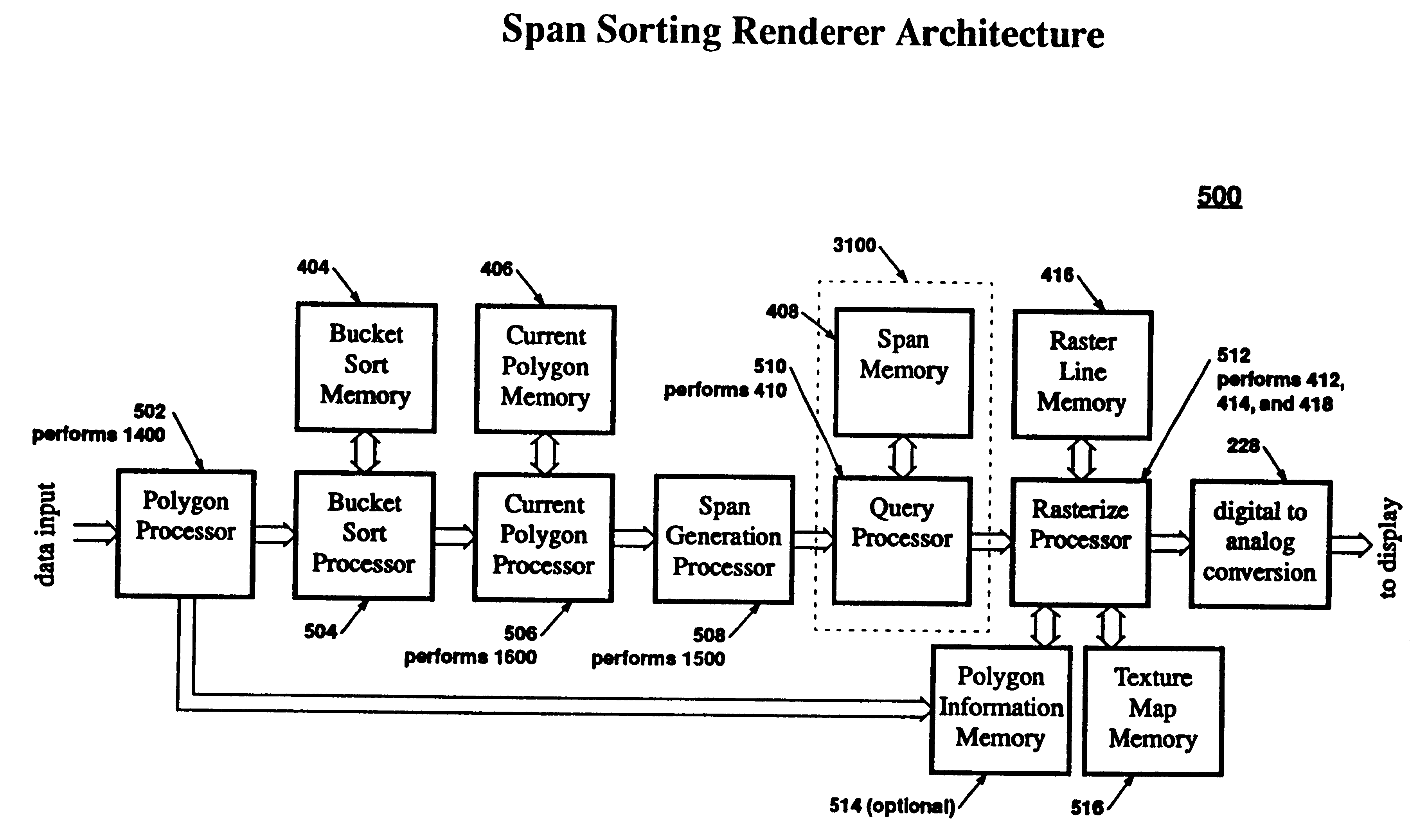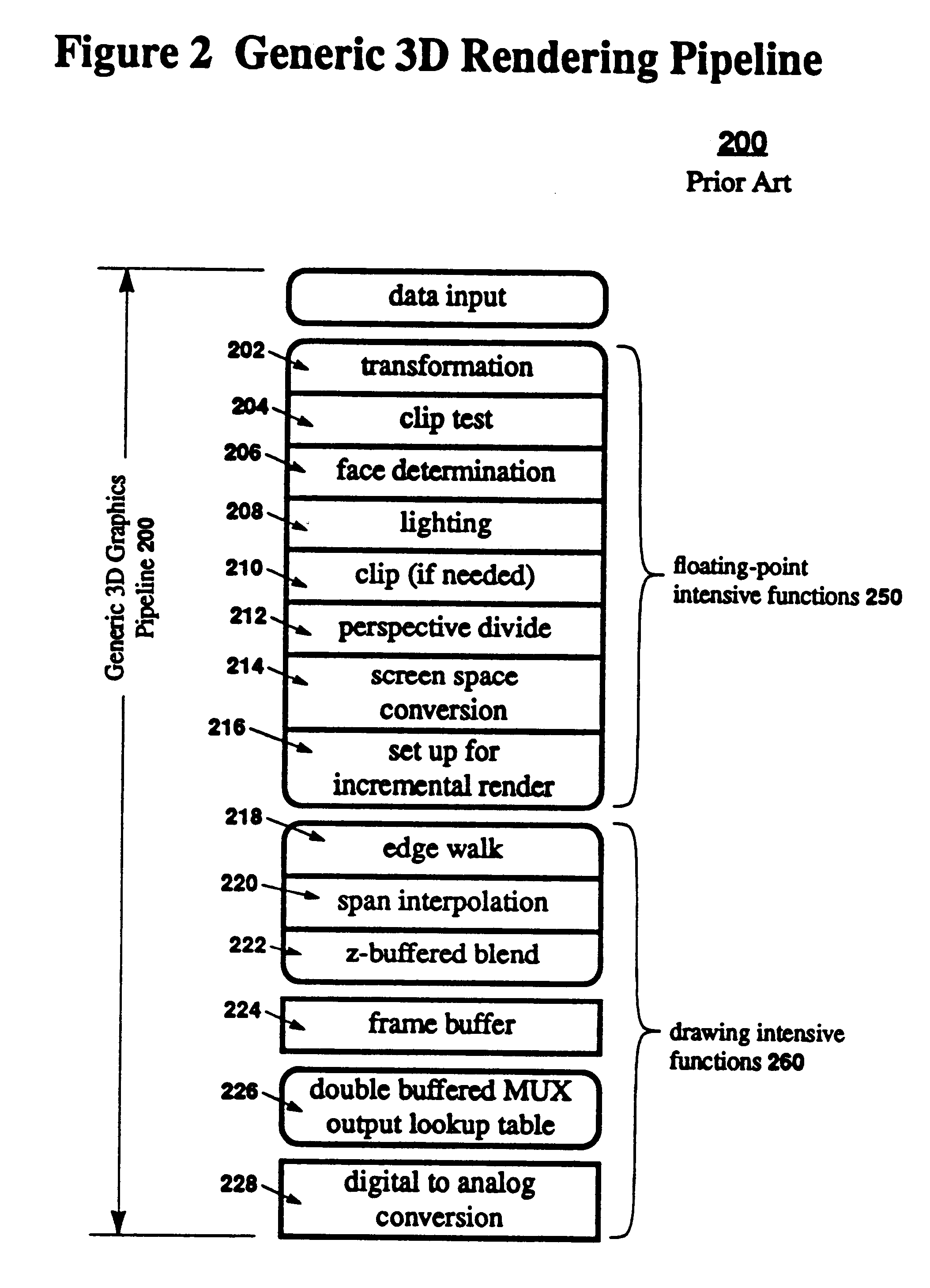Method and apparatus for span and subspan sorting rendering system
a sorting and subspan technology, applied in the field of three-dimensional computer graphics, can solve the problems of inability to build a cost-effective manner, the depth complexity of a scene is a measure of wasted processing, and the methods more complicated than the z-buffer technique have heretofore generally been too complex to achieve the effect of simplifying downstream processing and increasing compatibility
- Summary
- Abstract
- Description
- Claims
- Application Information
AI Technical Summary
Benefits of technology
Problems solved by technology
Method used
Image
Examples
Embodiment Construction
Span Sorting Rendering Pipeline
FIG. 4 shows the Span Sorting 3D Graphics Pipeline 400, where the first six steps are defined as the process polygon 1400 steps. The first five steps (transformation 202, clip test 204, face determination 206, lighting 208, and perspective divide 212) are the same as the five of the first six steps in the Generic 3D Graphics Pipeline 200. The clip 210 step is omitted because the Span Sorting 3D Graphics Pipeline 400 operates in object-precision, and coordinates are not limited to the area of the display screen 104. Elimination of the clip 210 step allows all polygons in the view volume 106 to be treated the same. However, the clip 210 step can be inserted if desired. The Span Sorting 3D Graphics Pipeline 400 can be built with dedicated hardware, done completely in software, or a combination of the two. Hereinafter, a dedicated hardware implementation is assumed, and a new apparatus is described.
The top-level block diagram of the new apparatus is shown ...
PUM
 Login to View More
Login to View More Abstract
Description
Claims
Application Information
 Login to View More
Login to View More - R&D
- Intellectual Property
- Life Sciences
- Materials
- Tech Scout
- Unparalleled Data Quality
- Higher Quality Content
- 60% Fewer Hallucinations
Browse by: Latest US Patents, China's latest patents, Technical Efficacy Thesaurus, Application Domain, Technology Topic, Popular Technical Reports.
© 2025 PatSnap. All rights reserved.Legal|Privacy policy|Modern Slavery Act Transparency Statement|Sitemap|About US| Contact US: help@patsnap.com



